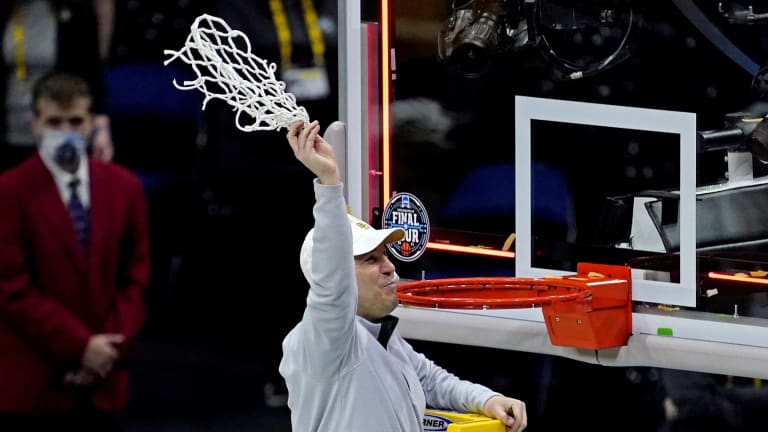
A Jersey Guy: Redemption for Baylor?

Comeback stories are always more fun to tell.
The longer the journey, the more satisfaction garnered when you reach the top is the basic theme.
So there it was for the entire world of college basketball to view on Monday night in Indianapolis.
A pair of non blue-blood basketball programs, No. 1 and unbeaten Gonzaga and No. 2 and twice beaten Baylor facing off in the final game of a pandemic-plagued season which had been characterized by its own set of unique challenges.
Gonzaga was not only chasing its first national championship, but flirting with history as well in its quest to become the first unbeaten national champion since Indiana did it in 1976.
Baylor?
The Bears also had a remarkable season, which was shutdown for a month in January by COVID--issues, but was also a profile of success, which has not been part of the program's DNA.
The Bears had not been to the Final Four since 1951 and last played in a national championship game in 1948.
But there was more, which also added to the context of the scene on Monday night as the Bears and their coach Scott Drew cut down the nets following a convincing 86-70 victory.
This was a program which 18 years ago climbed out of a sink hole created when the Bears were involved one of the biggest college scandals ever, including the murder of one of the players by his teammate and attempts by then Baylor coach Dave Bliss to implicate the dead player as a drug dealer.
This happened in a context in which Bliss was later involved in major NCAA violations.
All of which led to the arrival of Drew in 2003, who was asked to revive a program which appeared to be on life support.
How bad was it?
""Well, obviously going into every game being 30 or 40 point underdogs and half of your team walk ons'' said Drew who has rebuilt the program brick by brick. ""You know as a coach, (you say) if we can keep it close, keep it within 20 bv the first half or 10.''
Which makes what the Bears did in the first half so remarkable, against a Gonzaga team, which was already being labeled as one of the best units of all time.
How else to explain an early 8-0, 23-8 and 35-16 first half lead by Baylor in a game in which the Bears were never seriously challenged?
Drew calls the latest surge--which has been evident the past few seasons a "we'' thing.
"Really credit those guys who won three games that year (2003),'' said Drew. "And they laid the foundation. Those guys have stayed with the program and help support these guys. And that's what you love, over 18 years, there's so many people that put hard work and sweat. All our past players that constantly come back in the summertime, constantly help our young guys, send them messages, encourage them, I mean it's their championship as much as ours. And that's why it's a "we thing. And it's great thing for Baylor University.''
What makes Baylor almost unique is that's it just not about one program turning losing into winning, or one program that did it in scandal-ridden situation.
The Baylor football program was engulfed in an athletic department tsunami almost 10 years ago as well.
It goes back to 2011 when the Bears coached by Art Briles, produced a Heisman Trophy winning quarterback in Robert Griffin III as well as the school's first ever double digit win season.
That was what the public could see.
Internally, and spreading like a wild fire, was a program laced with numerous sexual assault charges against members of the football team, along with department cover ups
The end results were both sobering and nearly catastrophic following an institute-initiated investigation, which led to the dismissal of Briles, athletic director Ian McCaw and even led to the resignation of then Baylor President Ken Starr.
Like basketball, football revived itself as well, with new leadership, including athletic director Mack Rhodes and football coach Matt Rhule--who has since jumped to the next level as the head coach of the NFL Carolina Panthers.
It is the combination of football and basketball and the circumstances involved in both programs which makes what Baylor has accomplished so remarkable.
That success, however, should not whitewash the malfeasance which gripped both programs.
It is part of the Baylor athletic footprint, hopefully one which will never be repeated.
But it is also part of a legacy which also should be totally enjoyed and appreciated by the people who have created it.